
Enchanting Coron: The Jewel of the Philippines
Discover Coron, Philippines: A paradise of turquoise waters, limestone cliffs, and vibrant marine life, perfect for adventure seekers and nature lovers alike.
Coron, nestled in the Philippines, is a paradise of turquoise waters, limestone cliffs, and vibrant marine life. This enchanting destination is part of the Calamian Archipelago in northern Palawan and offers a unique blend of natural beauty and adventure. Whether you are a snorkeler, diver, or simply a lover of pristine beaches, Coron promises an unforgettable experience. One of the highlights of Coron is its remarkable dive sites. The waters around Coron Island are home to several Japanese shipwrecks from World War II, making it a haven for diving enthusiasts. The coral gardens, teeming with marine biodiversity, provide a stunning underwater spectacle. Even if you are not a diver, the crystal-clear waters are perfect for snorkeling, revealing a colorful array of fish and coral just below the surface. On land, Coron offers breathtaking landscapes. The iconic Kayangan Lake, often touted as one of the cleanest lakes in Asia, is a must-visit. Its emerald waters surrounded by towering limestone cliffs create a picture-perfect scene. For those seeking a bit of adventure, a hike up Mount Tapyas rewards you with a panoramic view of the entire island and its surrounding waters. The sunset from this vantage point is particularly awe-inspiring. Coron is not just about natural wonders; it also offers a glimpse into local culture. Visiting the Maquinit Hot Springs, fed by natural saltwater, provides a relaxing end to a day of exploration. The local markets and eateries offer delicious Filipino cuisine, with fresh seafood being a highlight. The warm hospitality of the locals ensures that every visitor feels at home in this tropical paradise.
Local tips in Coron
- Visit Kayangan Lake early in the morning to avoid the crowds and enjoy the serene beauty.
- Bring cash as many local establishments do not accept credit cards.
- Rent a motorbike for a convenient and flexible way to explore the island.
- Don't miss the sunset view from Mount Tapyas; it's a short but rewarding hike.
- Book your diving or snorkeling tours in advance, especially during peak season.
Enchanting Coron: The Jewel of the Philippines
Coron, nestled in the Philippines, is a paradise of turquoise waters, limestone cliffs, and vibrant marine life. This enchanting destination is part of the Calamian Archipelago in northern Palawan and offers a unique blend of natural beauty and adventure. Whether you are a snorkeler, diver, or simply a lover of pristine beaches, Coron promises an unforgettable experience. One of the highlights of Coron is its remarkable dive sites. The waters around Coron Island are home to several Japanese shipwrecks from World War II, making it a haven for diving enthusiasts. The coral gardens, teeming with marine biodiversity, provide a stunning underwater spectacle. Even if you are not a diver, the crystal-clear waters are perfect for snorkeling, revealing a colorful array of fish and coral just below the surface. On land, Coron offers breathtaking landscapes. The iconic Kayangan Lake, often touted as one of the cleanest lakes in Asia, is a must-visit. Its emerald waters surrounded by towering limestone cliffs create a picture-perfect scene. For those seeking a bit of adventure, a hike up Mount Tapyas rewards you with a panoramic view of the entire island and its surrounding waters. The sunset from this vantage point is particularly awe-inspiring. Coron is not just about natural wonders; it also offers a glimpse into local culture. Visiting the Maquinit Hot Springs, fed by natural saltwater, provides a relaxing end to a day of exploration. The local markets and eateries offer delicious Filipino cuisine, with fresh seafood being a highlight. The warm hospitality of the locals ensures that every visitor feels at home in this tropical paradise.
When is the best time to go to Coron?
Iconic landmarks you can’t miss
Kayangan Lake View Deck
Experience unparalleled views at Kayangan Lake View Deck, a must-visit destination in Coron, Palawan, showcasing breathtaking landscapes and natural wonders.
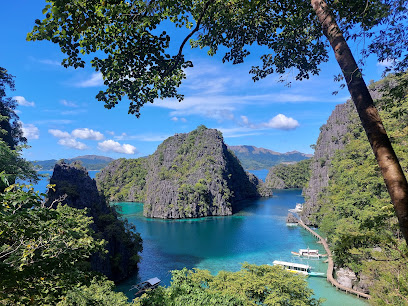
Mount Tapyas Pavilion
Experience the breathtaking views at Mount Tapyas Pavilion in Coron, Palawan – a perfect blend of adventure and stunning natural beauty.
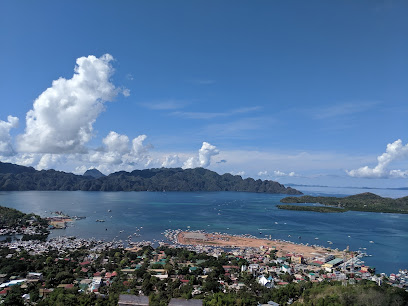
Twin Lagoon
Explore Twin Lagoon, a stunning natural gem in Coron, Palawan, with turquoise waters and dramatic limestone cliffs perfect for adventure and relaxation.
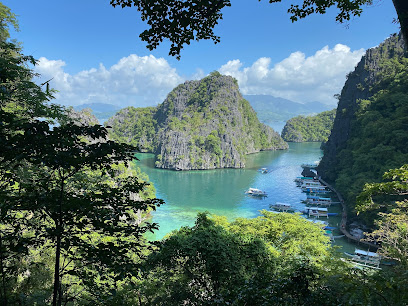
Kayangan Lake
Discover the breathtaking beauty of Kayangan Lake in Coron, Palawan – a stunning blend of crystal-clear waters and majestic limestone cliffs.
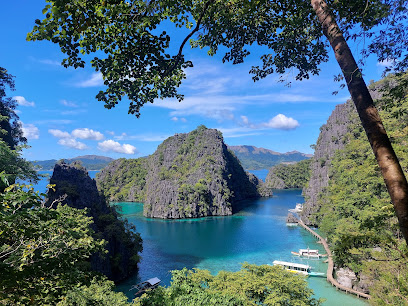
Paolyn Houseboats Coron Island
Discover tranquility at Paolyn Houseboats Coron Island, a unique hotel experience in the stunning Laknisan Lagoon surrounded by natural beauty and adventure.
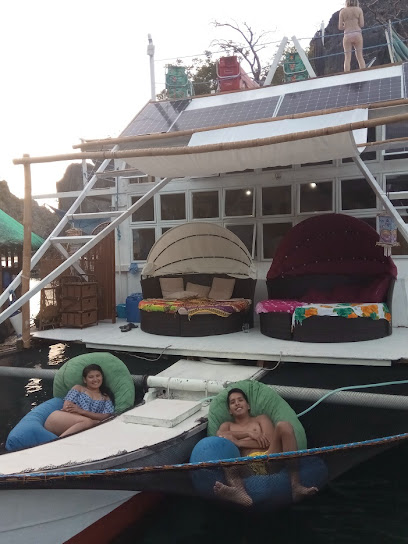
Bulog Dos Island
Explore the serene beauty of Bulog Dos Island, a tropical paradise in Coron, Palawan with pristine beaches, vibrant marine life, and unforgettable experiences.
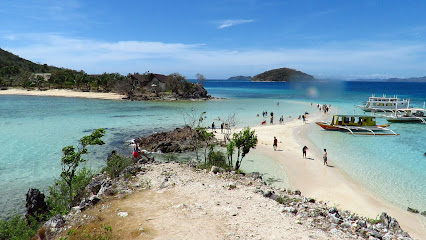
Atwayan Beach
Discover the serene beauty of Atwayan Beach in Coron, Palawan, where white sands meet azure waters in a tropical paradise.
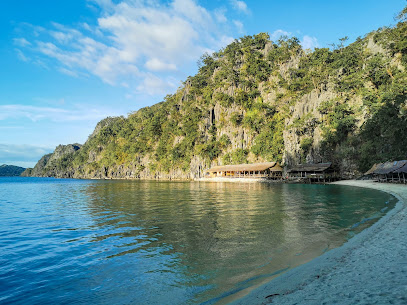
Kingfisher Park
Experience the serene beauty of Kingfisher Park in Coron, Palawan - a perfect blend of nature, tranquility, and adventure for every traveler.
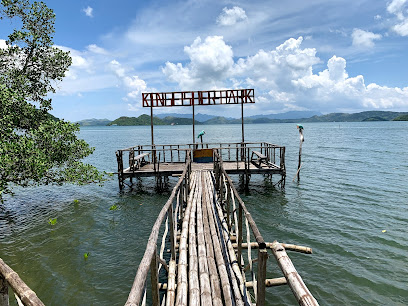
Lusong Coral Garden
Discover the vibrant marine biodiversity of Lusong Coral Garden in Coron, Palawan, a snorkeling paradise for all adventure seekers.
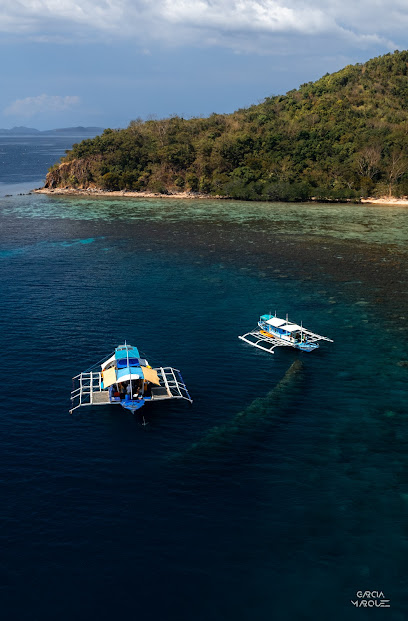
Lusong Gunboat
Explore the Lusong Gunboat in Coron, Palawan, a unique WWII historical landmark offering thrilling diving experiences and vibrant marine life.
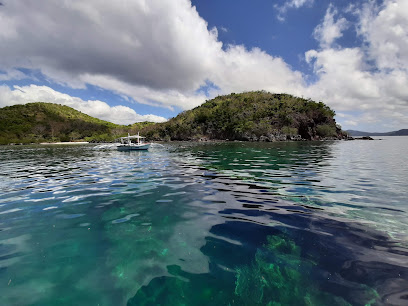
Coron Philippines
Explore the breathtaking lagoons and vibrant marine life of Coron, Philippines - a tropical paradise for adventure and relaxation.
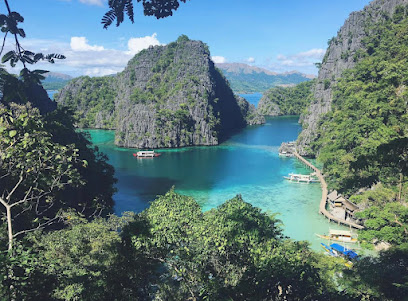
Vivian Beach
Experience the serene beauty of Vivian Beach, a hidden treasure in Coron, Palawan, offering pristine sands and vibrant marine life.

Coron, Palawan
Explore Coron, Palawan: A tropical paradise of crystal-clear lagoons, vibrant coral reefs, and breathtaking natural beauty awaits every traveler.
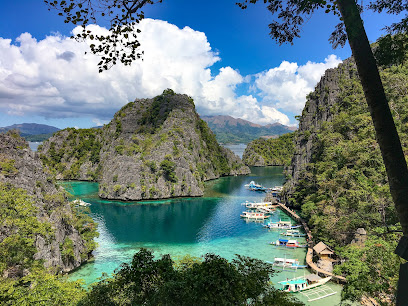
Centennial Shrine
Discover the historical essence of the Philippines at the Centennial Shrine in Coron, a serene landmark celebrating freedom and cultural heritage.

Explore Coron
Explore Coron, a tropical paradise in Palawan, known for its stunning lagoons, vibrant marine life, and rich cultural heritage, perfect for adventure seekers.

Unmissable attractions to see
Concepcion Falls
Explore Concepcion Falls in Busuanga, Palawan – a serene paradise of cascading waters and lush landscapes, perfect for nature lovers and adventure seekers.
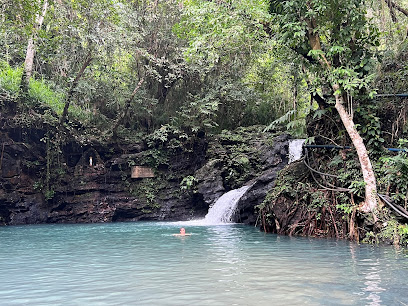
Kingfisher Park
Experience the tranquility of Kingfisher Park, a natural oasis in Coron, Palawan, perfect for relaxation, picnics, and bird watching.
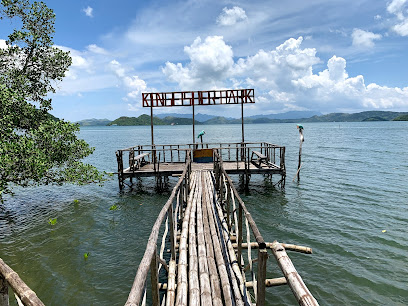
Pukaway Lagoon
Discover the breathtaking beauty and tranquility of Pukaway Lagoon in Coron, Palawan – a hidden paradise for every traveler.
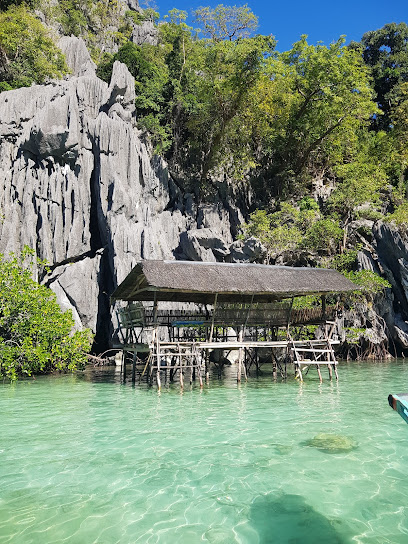
Barracuda Lake
Discover the enchanting beauty of Barracuda Lake in Coron, Palawan, where crystal-clear waters and stunning limestone cliffs create a paradise for swimming and snorkeling.
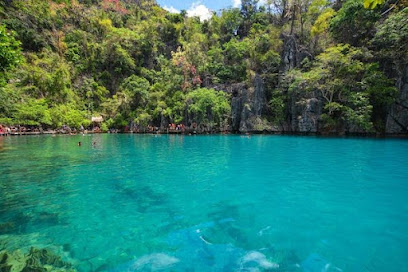
Marlon Island Tour
Discover the natural beauty and adventures of Marlon Island, a must-visit destination in Coron, Palawan, perfect for relaxation and exploration.
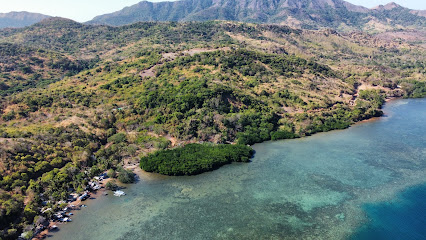
Seven Falls
Explore the breathtaking beauty of Seven Falls in Coron, Palawan – a serene park filled with cascading waterfalls and lush landscapes.
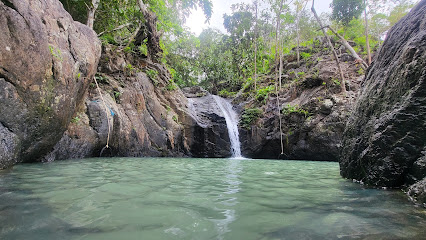
Pukaway Cave Underground Lake
Experience the breathtaking beauty of Pukaway Cave Underground Lake, a serene natural wonder in Coron, Palawan, perfect for adventure and relaxation.

Debotunay Island
Experience the untouched beauty and tranquility of Debotunay Island, a pristine paradise in Busuanga, Palawan, perfect for relaxation and adventure.
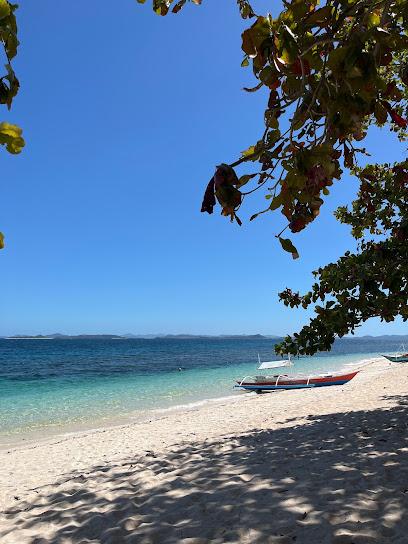
Teru Kaze Maru
Discover the serene beauty and vibrant culture of Teru Kaze Maru, a must-visit tourist attraction in Coron, Palawan, that enchants every traveler.
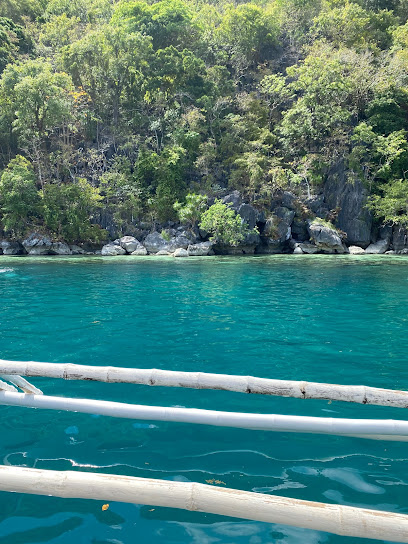
Ditaytayan Sandbar
Experience the pristine beauty of Ditaytayan Sandbar, a tranquil paradise in Palawan perfect for sunbathing, swimming, and snorkeling adventures.
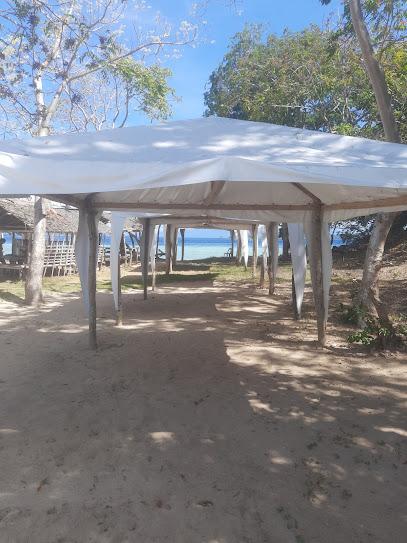
Pamalican Island
Experience the tranquil charm of Pamalican Island in Palawan, an idyllic paradise with pristine beaches and vibrant marine life for ultimate relaxation.
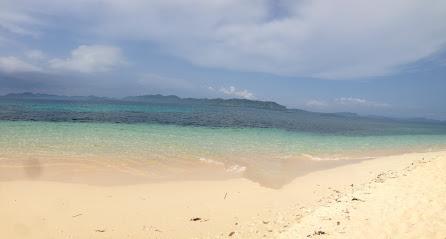
Coral Eden
Explore Coral Eden in Coron, a breathtaking marine sanctuary perfect for snorkeling, diving, and appreciating the stunning beauty of nature.
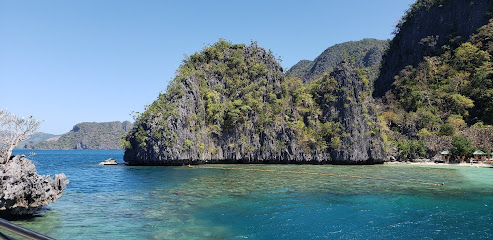
Skeleton Point
Immerse yourself in the stunning landscapes and breathtaking views at Skeleton Point, a must-visit tourist attraction in Coron, Philippines.
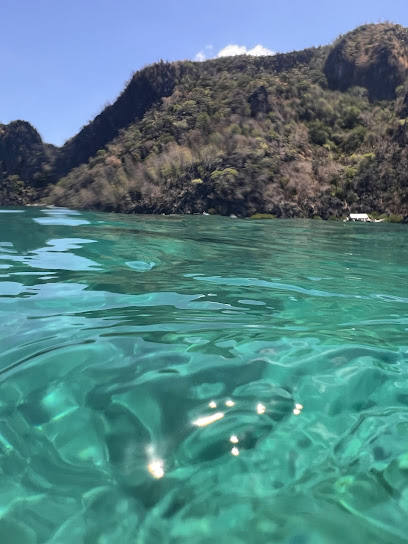
Kilien falls
Explore the enchanting beauty of Kilien Falls in Palawan, a hidden gem offering stunning landscapes and a peaceful retreat in nature.
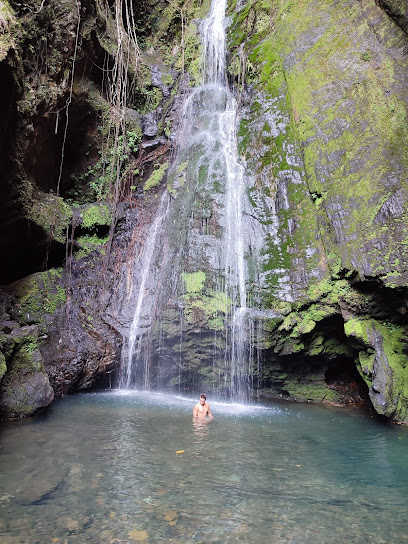
Jimboy Island tours
Explore the stunning beauty of Coron with Jimboy Island Tours, offering unforgettable adventures in a tropical paradise.
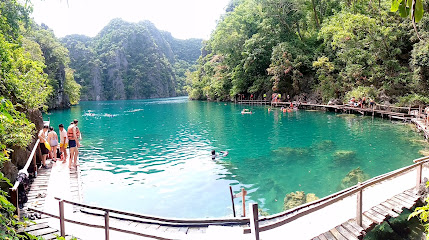
Essential places to dine
Trattoria Altrove
Experience authentic Italian flavors at Trattoria Altrove in Coron—where every pizza tells a story of quality and tradition.
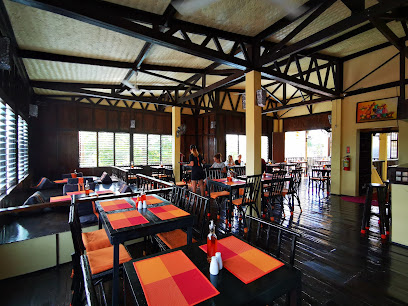
Lobster King
Savor fresh seafood delights at Lobster King in Coron - where culinary tradition meets ocean freshness.
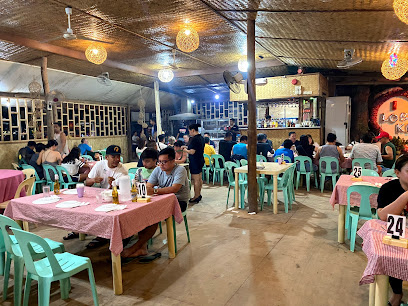
Gavin's kitchen + bar
Discover culinary delights at Gavin's Kitchen + Bar in Coron - where local flavors meet international flair in a welcoming atmosphere.

Karl's BBQ
Experience authentic Filipino barbecue at Karl's BBQ in Coron - where great flavors meet warm hospitality.
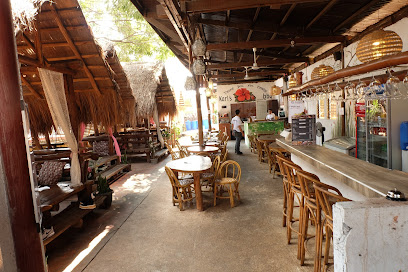
PACIFICO CORON BAR AND RESTAURANT
Discover culinary delights at PACIFICO CORON BAR AND RESTAURANT in Coron, Palawan - where local flavors meet stunning views.
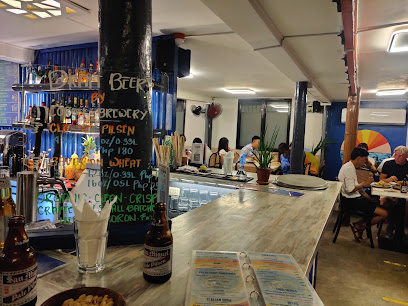
El Kuvo
Discover exquisite Filipino cuisine at El Kuvo in Coron – where every meal is a celebration of flavor and hospitality.
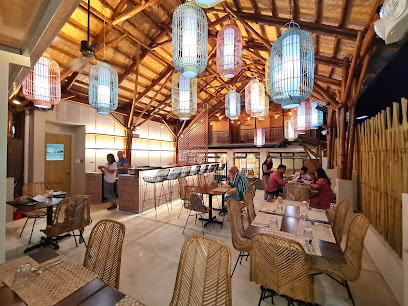
Sharky’s Restobar
Experience the flavors of Asia at Sharky's Restobar, where fresh seafood meets vibrant ambiance in Coron, Palawan.
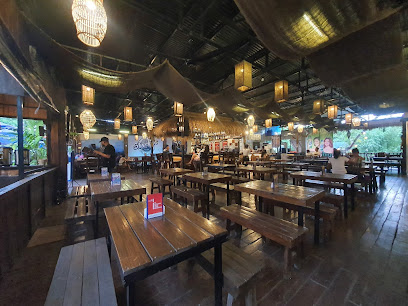
Om’s Thai
Discover the authentic flavors of Thailand at Om’s Thai in Coron – where every meal is a celebration of taste.
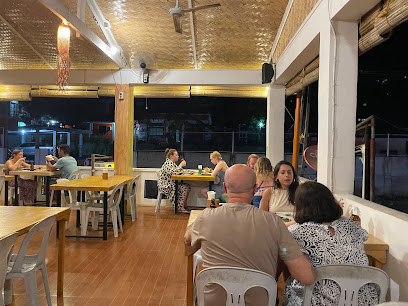
Umamikusina
Discover authentic Filipino flavors at Umamikusina in Coron - where every dish reflects the rich culinary heritage of Palawan.
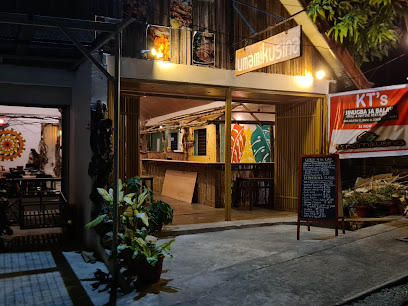
Hermanos Tapas and Wine Bar
Experience authentic Spanish tapas and exquisite wines at Hermanos Tapas and Wine Bar in beautiful Coron, Palawan.
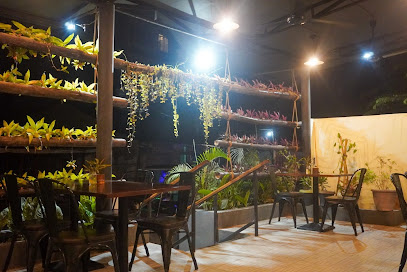
Kawayanan Grilling Station
Discover authentic Filipino flavors at Kawayanan Grilling Station in Coron—where fresh ingredients meet delightful grilling techniques.
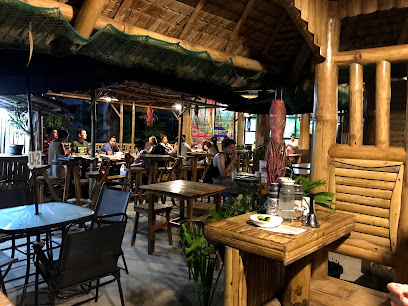
Poco Deli
Discover culinary delights at Poco Deli in Coron - where local flavors meet international cuisine amidst the beauty of Palawan.
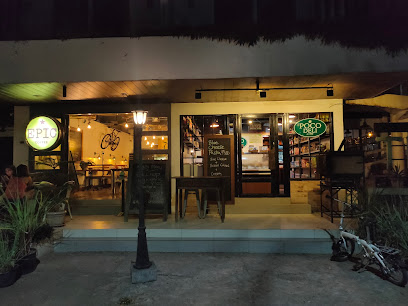
La Sirenetta Seafood Restaurant & Bar
Discover La Sirenetta Seafood Restaurant & Bar - where fresh seafood meets stunning bay views in beautiful Coron, Palawan.
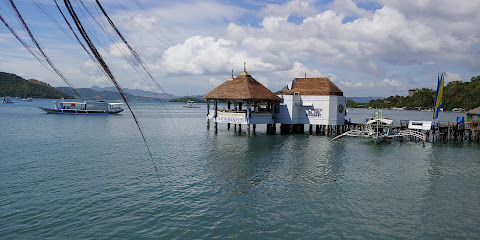
Levine's Eatery
Experience authentic Filipino cuisine in Coron at Levine's Eatery - home to the best Sisig and local delicacies.
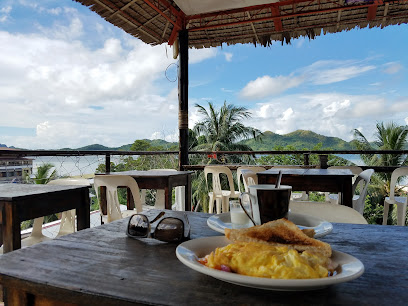
Santino's Grill
Experience authentic Filipino cuisine at Santino's Grill in Coron—where flavor meets hospitality.
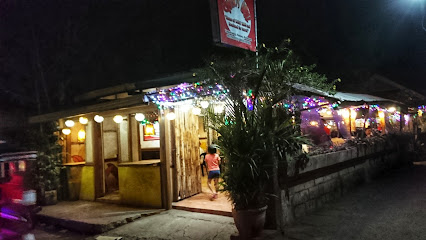
Markets, malls and hidden boutiques
Coron Souvenirs & Gift Shop
Discover unique souvenirs and local treasures at Coron Souvenirs & Gift Shop, where every item tells a story of the beautiful Coron islands.
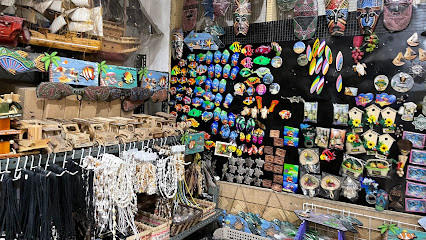
Pick A Pearl
Discover exquisite Filipino pearl jewelry at Pick A Pearl in Coron, where craftsmanship meets the beauty of the ocean.
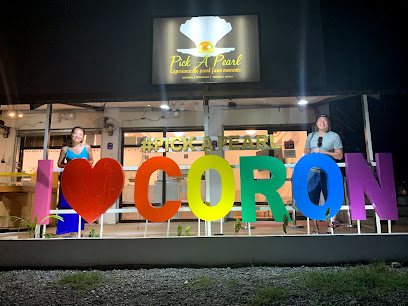
Aramintas Arts & Crafts
Discover unique local handicrafts and souvenirs at Aramintas Arts & Crafts in Coron, showcasing the rich culture and artistry of Palawan.
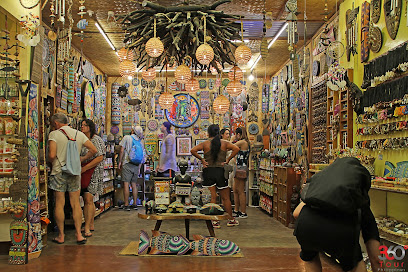
Souvenir Shop
Explore the enchanting Souvenir Shop in Coron, Palawan, and discover authentic treasures that capture the essence of the Philippines.
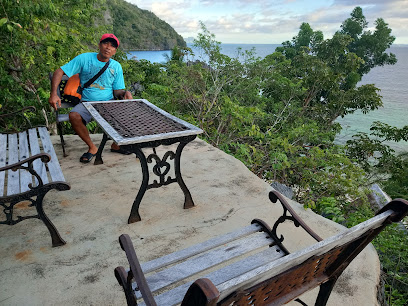
Dhadz Souvenir & Pasalubong Center
Explore the heart of Coron with unique souvenirs and local delicacies at Dhadz Souvenir & Pasalubong Center, your gateway to authentic Philippine treasures.
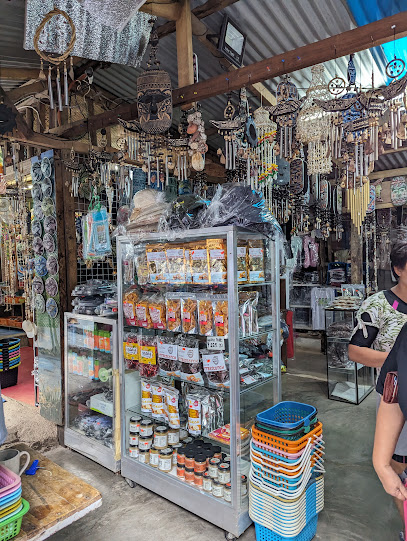
Cashew and local handicrafts Pasalubong
Explore the vibrant Cashew and Local Handicrafts Pasalubong in Coron, where authentic souvenirs and delicious treats await every traveler.
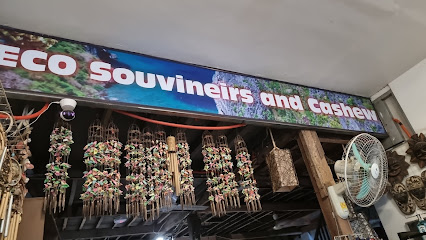
Makulit
Explore Makulit in Coron, your go-to destination for authentic Filipino souvenirs and local crafts that capture the essence of the Philippines.
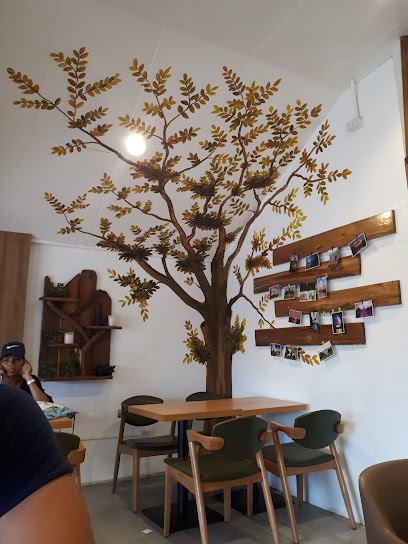
Camille's Souvenir Curio Shop
Explore Camille's Souvenir Curio Shop in Coron for unique, handcrafted treasures that capture the spirit of Palawan and make perfect keepsakes.
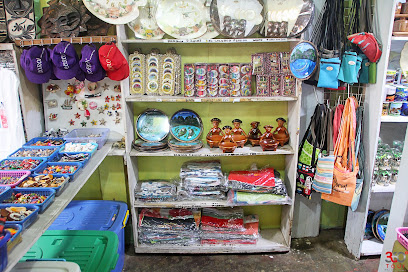
ECO Cashew & Souvenir
Discover the flavors and crafts of Coron at ECO Cashew & Souvenir, your go-to spot for local delicacies and unique handmade treasures.
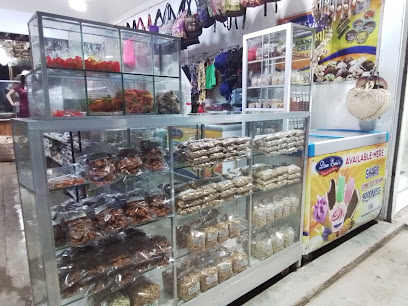
Pearl y shell souvenir shop
Explore the charm of Coron with unique handcrafted souvenirs at Pearl y Shell, where local artistry meets exquisite craftsmanship.
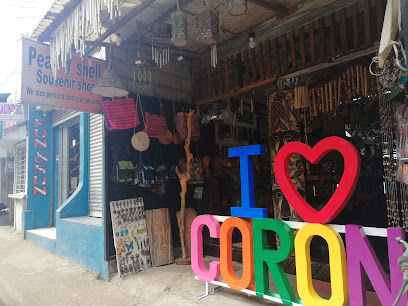
Camille Souvenir Shop Real St
Explore the vibrant offerings of Camille Souvenir Shop in Coron, Palawan, where every item is a reflection of local culture and craftsmanship.
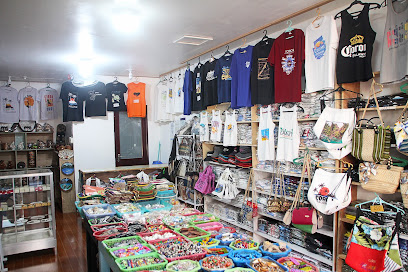
AJ's Recuerdo Handy Shop
Explore AJ's Recuerdo Handy Shop for exquisite local handicrafts and souvenirs that capture the spirit of Coron, Palawan.

Aplaya Souvenirs - Coron
Discover unique handcrafted souvenirs at Aplaya Souvenirs in Coron, where local artistry meets unforgettable travel experiences.

Islands Souvenirs
Explore the vibrant culture of Coron, Palawan at Islands Souvenirs, where authentic local crafts await to be discovered.
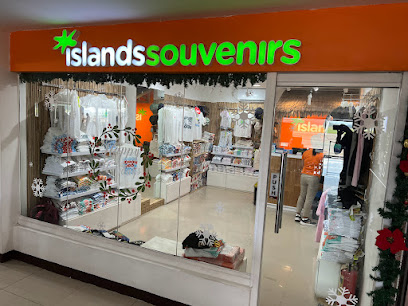
Ocean Pearl Shop
Explore the Ocean Pearl Shop in Coron for unique handcrafted souvenirs and local artistry, capturing the spirit of Palawan in every piece.
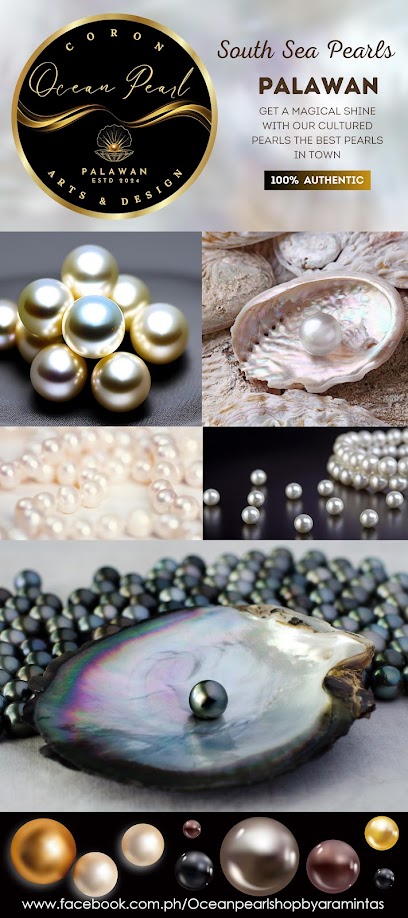
Essential bars & hidden hideouts
Sharky’s Restobar
Discover the taste of Coron at Sharky’s Restobar, where vibrant Asian flavors meet fresh seafood in a lively atmosphere.

Hermanos Tapas and Wine Bar
Discover the authentic taste of Spain at Hermanos Tapas and Wine Bar, where flavorful tapas and fine wines meet the beauty of Coron, Palawan.
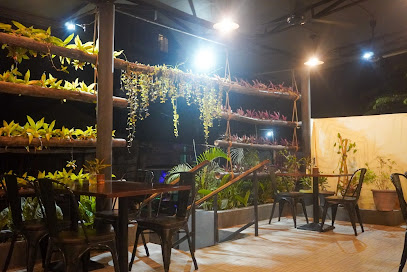
Get Real Bar & Restaurant
Discover the vibrant dining experience at Get Real Bar & Restaurant in Coron, offering delicious food, refreshing drinks, and a lively atmosphere.
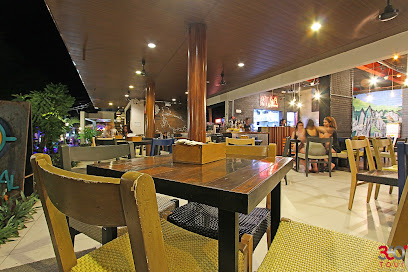
Tribu Kuridas Bar And Tattoo
Experience vibrant nightlife at Tribu Kuridas Bar And Tattoo in Coron, Palawan, where great drinks meet stunning tattoo artistry.
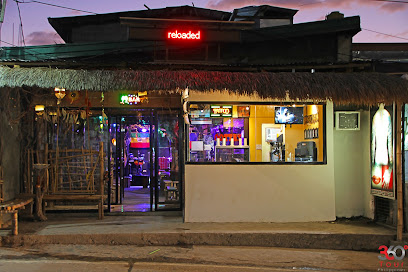
The BrewHouse
Discover The BrewHouse in Coron, where craft beer meets delectable European cuisine in a vibrant atmosphere perfect for tourists.
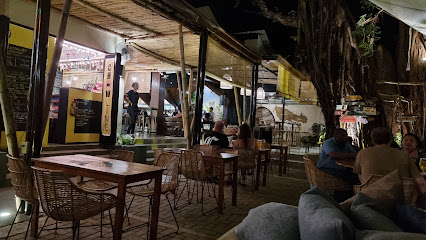
Bam Bar
Discover the unforgettable nightlife of Bam Bar in Coron, Palawan, where live music and delicious drinks blend for an exceptional experience.
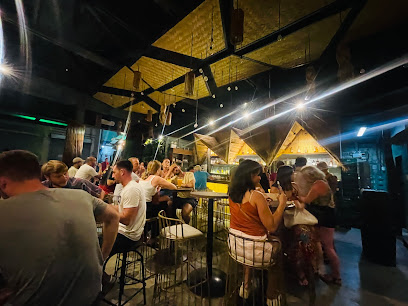
ALA - E Hippie House
Experience the laid-back vibe of ALA - E Hippie House, where great drinks and a friendly atmosphere await in Coron, Palawan.
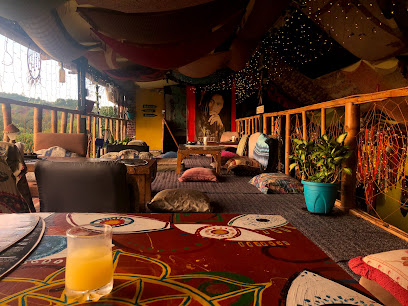
NoName Bar
Discover the vibrant nightlife at NoName Bar in Coron, a perfect blend of music, drinks, and unforgettable moments in the heart of Palawan.
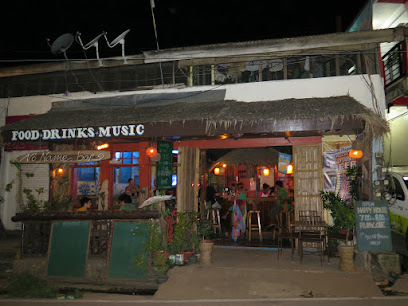
Sunburn Rooftop Lounge
Discover the lively atmosphere and stunning views at Sunburn Rooftop Lounge in Coron, Palawan – the ultimate destination for relaxation and fun.

LEVEL UP CORON
LEVEL UP CORON: Where Sports, Karaoke, and Nightlife Converge for an Unforgettable Experience in Coron, Palawan.
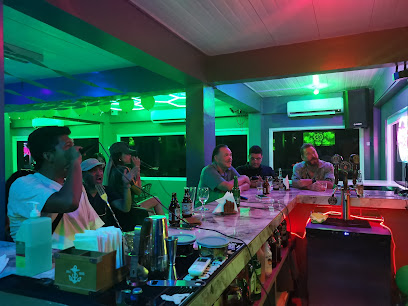
Helldivers Bar
Discover the vibrant atmosphere of Helldivers Bar in Coron, where local culture meets a lively nightlife experience.
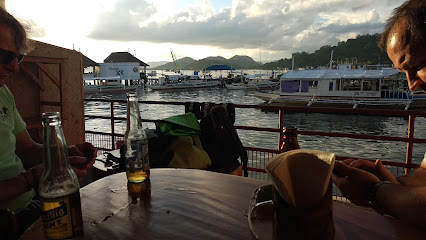
Hayahay resto bar and karaoke and tattoo
Discover the vibrant nightlife at Hayahay Resto Bar and Karaoke in Coron, where great food meets unforgettable entertainment.
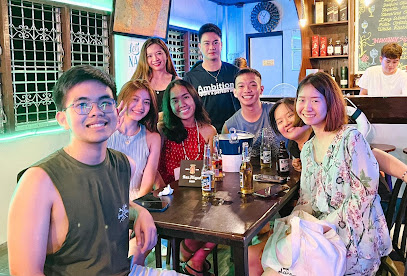
Catch & Release Rooftop Bar & Restaurant
Experience stunning views and delightful flavors at Catch & Release Rooftop Bar & Restaurant in Coron, Palawan.

Yuki's Bar
Experience the vibrant nightlife of Coron at Yuki's Bar, where local charm meets lively atmosphere and unforgettable drinks.
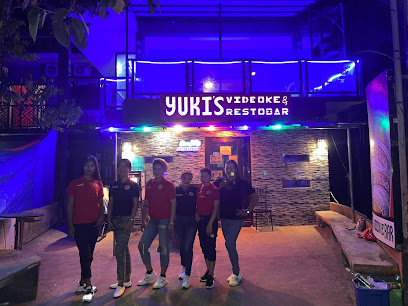
Apoy Rooftop Gastropub
Discover the exquisite flavors and stunning views at Apoy Rooftop Gastropub in Coron, Palawan—a must-visit for food and drink enthusiasts.
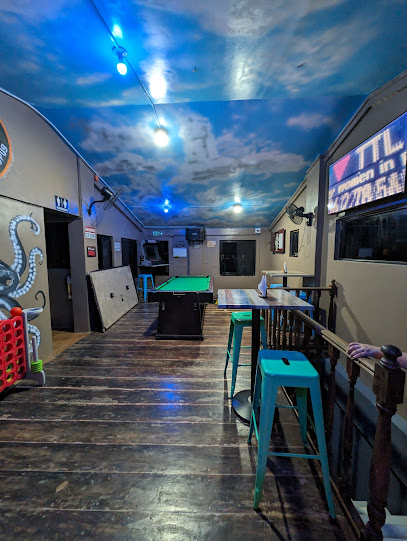
Local Phrases about Coron
-
- HelloKumusta
[koo-moo-sta] - GoodbyePaalam
[pa-a-lam] - YesOo
[oh-oh] - NoHindi
[hin-dee] - Please/You're welcomePaki
[pa-kee] - Thank youSalamat
[sa-la-mat] - Excuse me/SorryPasensya
[pa-sen-sya] - How are you?Kamusta ka?
[ka-moo-sta ka] - Fine. And you?Mabuti. Ikaw?
[ma-boo-tee. ee-kaw] - Do you speak English?Marunong ka ba mag-English?
[ma-roo-nong ka ba mag-english] - I don't understandHindi ko maintindihan
[hin-dee ko main-tin-di-han]
- HelloKumusta
-
- I'd like to see the menu, pleaseGusto ko makita ang menu, pakiusap
[gus-to ko ma-ki-ta ang me-nu, pa-ki-oo-sap] - I don't eat meatHindi ako kumakain ng karne
[hin-dee a-ko koo-ma-ka-in ng kar-ne] - Cheers!Tagay!
[ta-gai] - I would like to pay, pleaseGusto ko magbayad, pakiusap
[gus-to ko mag-ba-ya-ad, pa-ki-oo-sap]
- I'd like to see the menu, pleaseGusto ko makita ang menu, pakiusap
-
- Help!Tulong!
[too-long] - Go away!Lumayo ka!
[lu-ma-yo ka] - Call the Police!Tumawag ng Pulis!
[too-ma-wag ng pu-lis] - Call a doctor!Tumawag ng doktor!
[too-ma-wag ng dok-tor] - I'm lostNawawala ako
[na-wa-wa-la a-ko] - I'm illSakit ako
[sa-kit a-ko]
- Help!Tulong!
-
- I'd like to buy...Gusto ko bumili ng...
[gus-to ko bu-mi-li ng] - I'm just lookingNagmamasid lang ako
[nag-ma-ma-sid lang a-ko] - How much is it?Magkano ito?
[mag-ka-no ee-to] - That's too expensiveMasyadong mahal
[ma-sya-dong ma-hal] - Can you lower the price?Pwede bang babaan ang presyo?
[pwe-de bang ba-ban ang pre-syo]
- I'd like to buy...Gusto ko bumili ng...
-
- What time is it?Anong oras na?
[a-nong o-ras na] - It's one o'clockAlas-una na
[a-las-oo-na na] - Half past (10)Alas-diyes y medya
[a-las-dyess e med-ya] - MorningUmaga
[oo-ma-ga] - AfternoonHapon
[ha-pon] - EveningGabi
[ga-bee] - YesterdayKahapon
[ka-ha-pon] - TodayNgayon
[nga-yon] - TomorrowBukas
[boo-kas] - 1Isa
[ee-sa] - 2Dalawa
[da-la-wa] - 3Tatlo
[tat-lo] - 4Apat
[a-pat] - 5Lima
[lee-ma] - 6Anim
[a-nim] - 7Pito
[pee-to] - 8Walo
[wa-lo] - 9Siyam
[see-yam] - 10Sampu
[sam-poo]
- What time is it?Anong oras na?
-
- Where's a/the...?Nasaan ang/isang...
[na-saan ang/ee-sang] - What's the address?Ano ang address?
[a-no ang address] - Can you show me (on the map)?Pwede mo ba akong ipakita (sa mapa)?
[pwe-de mo ba a-kong ee-pa-kee-ta sa ma-pa] - When's the next (bus)?Kailan ang susunod na (bus)?
[ka-i-lan ang su-su-nod na bus] - A ticket (to ....)Isang tiket (papunta sa ....)
[ee-sang ti-ket pa-pun-ta sa]
- Where's a/the...?Nasaan ang/isang...
History of Coron
-
Before the arrival of Spanish colonizers, Coron was home to the indigenous Tagbanwa people. The Tagbanwa have a rich culture that includes animistic religious practices and a deep connection to the natural world. They lived in harmony with the land, relying on fishing, hunting, and small-scale farming.
-
During the 16th century, the Spanish arrived in the Philippines, including Coron. Spanish missionaries attempted to convert the Tagbanwa people to Christianity, and the area was placed under Spanish rule. Despite this, many Tagbanwa retained their traditional beliefs and ways of life.
-
During World War II, Coron became a strategic location. The Japanese occupied the area and used the natural harbors for their naval operations. In 1944, the U.S. Navy launched a significant airstrike against the Japanese fleet anchored in Coron Bay, resulting in the sinking of several Japanese warships. These sunken ships have since become popular dive sites.
-
After World War II, Coron underwent a period of rebuilding and recovery. The Tagbanwa people reclaimed some of their ancestral lands, and the area began to develop slowly. Fishing and agriculture remained the primary livelihoods for the local population.
-
In recent decades, Coron has emerged as a major tourist destination known for its stunning limestone cliffs, crystal-clear waters, and rich marine biodiversity. The local government and communities are focused on sustainable tourism to protect the natural environment and preserve the cultural heritage of the Tagbanwa people.
Coron Essentials
-
Coron is accessed primarily via Francisco B. Reyes Airport (USU), which is located on Busuanga Island. The airport has flights connecting from Manila (Ninoy Aquino International Airport) and Cebu (Mactan-Cebu International Airport), with a flight time of about one hour. From the airport, you can take a van or taxi to Coron town, which is approximately a 30-40 minute drive. Alternatively, you can reach Coron by ferry from Manila, Puerto Princesa, or El Nido; the ferry rides, while longer, offer scenic views.
-
Within Coron, transportation options include tricycles, which are the local equivalent of tuk-tuks and are the most common mode of transport. They are affordable and can be hailed on the street or booked for a specific journey. For more comfort, you can hire a van or motorbike. Boats are also extensively used for island hopping tours and can be chartered for private trips. Car rentals are available but less common due to the island's small size and the convenience of other transport modes.
-
The official currency in Coron is the Philippine Peso (PHP). Credit cards are accepted in many hotels and some restaurants, but cash is preferred, especially in smaller establishments and local markets. ATMs are available in Coron town, but it's advisable to carry enough cash, especially if planning to visit more remote areas or islands.
-
Coron is generally a safe destination for tourists, but standard precautions should be taken. Petty crimes like pickpocketing can occur, especially in crowded areas such as markets and tourist hotspots. Avoid walking alone at night in unfamiliar areas and keep an eye on your belongings. There are no specific high-crime areas targeting tourists, but always stay vigilant and aware of your surroundings.
-
In case of emergency, dial 911 for police assistance, 117 for fire emergencies, and 112 for medical emergencies. Coron District Hospital is available for medical emergencies, located in Coron town. Pharmacies are also available for minor health issues and over-the-counter medications. It's highly recommended to have travel insurance that covers medical emergencies.
-
Fashion: Do dress modestly, especially when visiting religious sites. Avoid wearing revealing clothing. Religion: Do respect local customs and traditions. Always cover your head when entering religious sites. Public Transport: Do be respectful and give up your seat to elderly passengers. Don't eat or drink on public transport. Greetings: Do greet people with a smile or a handshake. A slight bow of the head is also a sign of respect. Eating & Drinking: Do try local delicacies and accept food offerings graciously. Don't refuse hospitality, as it is considered impolite.
-
To experience Coron like a local, visit the local markets, such as the Coron Public Market, where you can buy fresh produce and local delicacies. Engage with the locals; they are often friendly and willing to share stories about the island's history and culture. Don't miss out on island hopping tours to see the beautiful lagoons, lakes, and coral reefs. For a unique experience, visit Maquinit Hot Springs and take a dip in the natural hot spring pools.
Nearby Cities to Coron
-
Things To Do in Tagaytay
-
Things To Do in Puerto Princesa
-
Things To Do in Manila
-
Things To Do in Subic
-
Things To Do in Palawan
-
Things To Do in Angeles City
-
Things To Do in Legazpi
-
Things To Do in Cebu City
-
Things To Do in Baguio
-
Things To Do in Bohol
-
Things To Do in Sagada
-
Things To Do in Camiguin
-
Things To Do in Zamboanga City
-
Things To Do in Vigan
-
Things To Do in Cagayan de Oro












